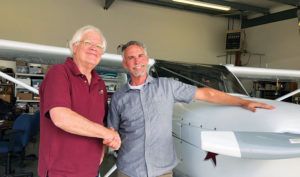
I’m sure there were perfectly fine used homebuilts closer to me than N531CE—it was at the other end of the country, after all. But this GlaStar is, in many respects, the right airplane. First of all, it’s really familiar, enough like my Sportsman that I know what to do and how to do it. Those of you quick to accuse me of reenacting old behavior, I say “fair enough.” I did look at other designs, but this turned out to be the right airplane at the right price.
More than that, it’s beautifully built if lightly equipped. For now, Charlie Echo is very, very basic. A single com radio, transponder, previous-generation portable GPS, and steam gauges. The previous owner added a TruTrak two-axis autopilot, but thanks to the lack of equipment—it doesn’t even have a heated pitot head—this is a purely VFR airplane.
The first step bringing it home was not, actually, to hop in and head east. I needed to set up my iPad and Garmin GDL 50 so I could get ADS-B In/TIS-B weather and traffic during the trip; these are pieces I already had, I just needed to find a way to get them integrated. Thankfully, our web guru, Omar Filipovic, lives in the Portland area and offered the use of his hangar at Twin Oaks Airpark for a day of tweaking.
Beyond a thorough going-over of the airplane, I decided to swap out an instrument. I knew the turn coordinator had coordinated its last, so the plan was to install a Garmin G5 EFIS where the attitude indicator was, move that to the TC hole, verify my work, and then I’d have a new “toy” to play with on the flight. I’d already built a harness at home, so this was a swift and painless install. (More on that next issue.)
Why the G5 now, given this is a purely VFR airplane? My plans include an IFR GPS and the G5 can serve as an indicator for that system. Plus, it can be that and a backup instrument—for much less cost than a conventional CDI. Deal done.
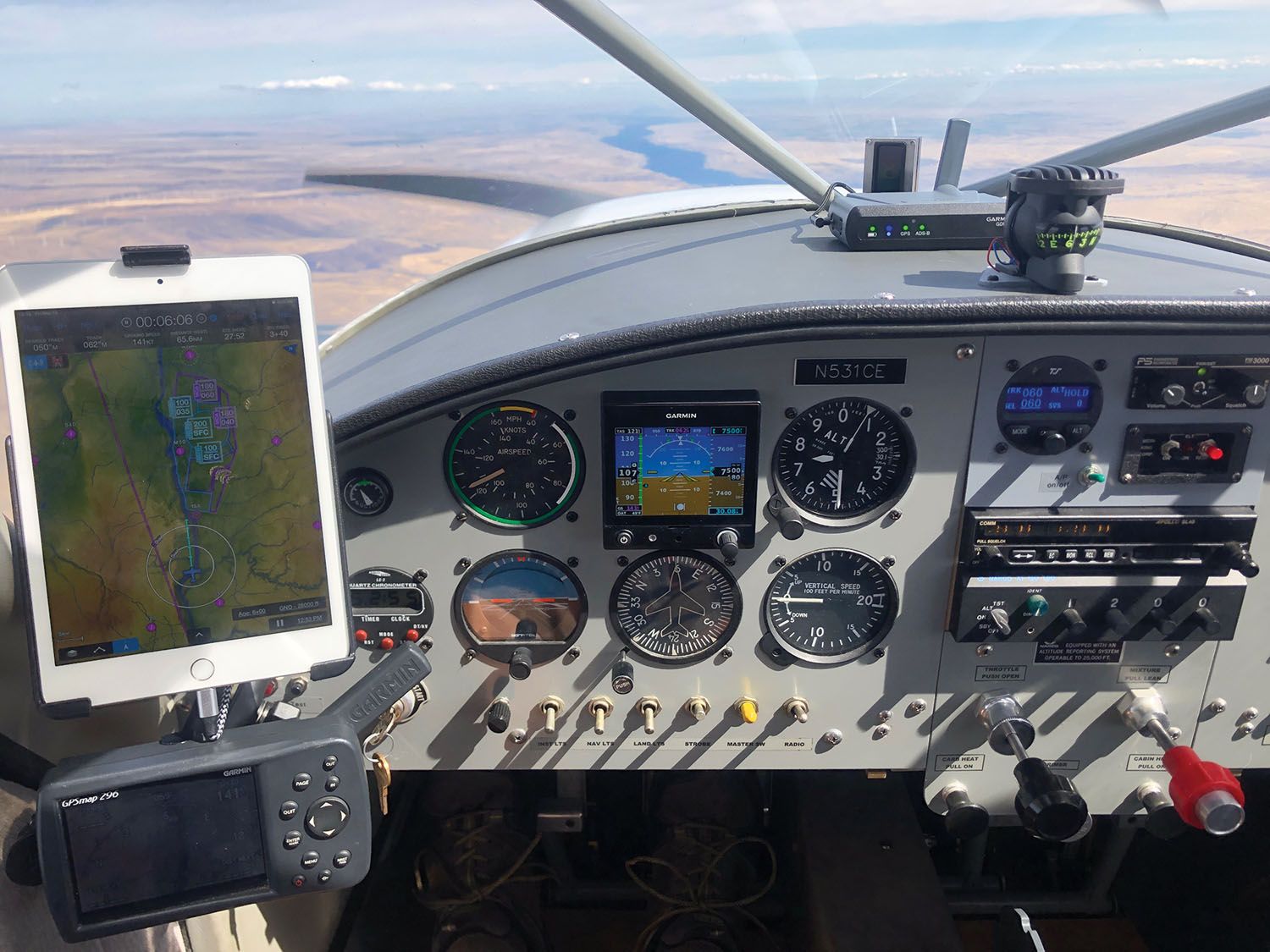
The short version of a 2.5-day trip is this: strikingly uneventful. Because Omar and I got done quickly, I left the Portland area Friday afternoon, intending to get some distance down range before dark. The weather was overall very good, though the winds aloft were picking up, and I’m wary of flying in mountainous terrain when the winds are moving. Down the Columbia River gorge and heading in the general direction of Helena, Montana, the ride was good, tailwinds helpful, and not a cloud in sight. I got as far as Lewiston, Idaho, when the weather picture ahead of me—especially the surface winds in Missoula, Montana, which were strong and very gusty—suggested a landing and regroup for the morning. Even then, the winds at KLWS had their fun with me; at 7 aggressively gusting to 20 knots. That was a landing that continued all the way to parking, as they say.
The next morning was gorgeous, with calm winds at the surface and a nice tailwind aloft. I’d become comfortable with Charlie Echo, starting to document its cruise performance and fuel consumption—120-125 knots true on less than 8 gph. Still, the analog engine gauges stymied my attempts at precise leaning.
I wanted to get into Wisconsin to stay with friends that evening, and events duly obliged. Up over Missoula, then Helena, then across the Missouri River and roughly following Highway 12, I kept good distance to terrain and a highway or two well inside my glide-path cone. A fuel stop in Miles City, Montana, and another at the Olivia Regional Airport in Minnesota, got me into Waukesha, Wisconsin, for dinner. Trip legs of around 3 hours each gave me a bit more than an hour in the tanks on landing.
The first serious challenge came the next morning, when mostly clear skies turned to sub-VFR overcast during breakfast and didn’t improve until almost 11. I was able to sneak out in reliably good VFR, find a big hole near Kenosha that let me get on top, where I could then head down the east side of Chicago and, once clear, plot a straight line for Tri-City Airport in Sebring, Ohio.
That’s where I had my second kindness-of-strangers experience. Earlier in Lewiston, Ralph Stout, the owner of Stout Flying Service, greeted me on landing, offered to find me a hotel for the night, and even drove me downtown. “I’m going to the bank anyway,” he said. “Let’s go.” Then, at Tri-City, the self-service machine rejected me. One of the airport owners, who was working in his hangar and had heard me land, ambled over to help.
Two and a half hours later, Charlie Echo and I crossed the Hudson, NYC in the distance, and half an hour after that touched down on Runway 25 at Westerly in southern Rhode Island—the lush green landscape a powerful contrast to the dusty browns of the mountainous Northwest or the stony-gray overcast that followed me through the Midwest. With that, one journey ended—and another just begun.
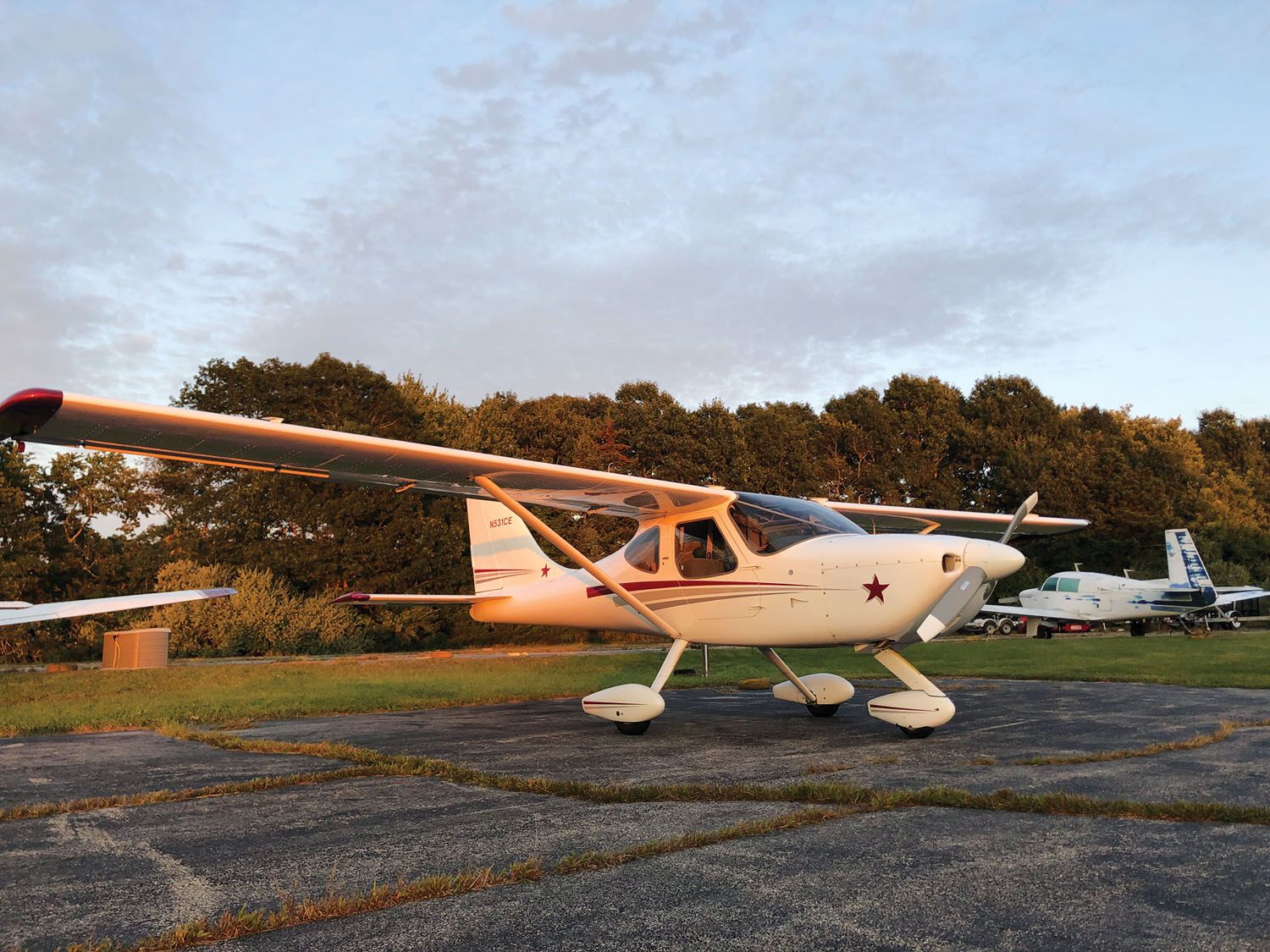








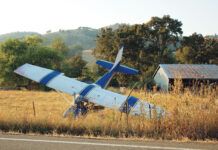



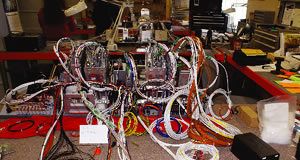
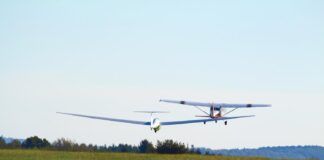
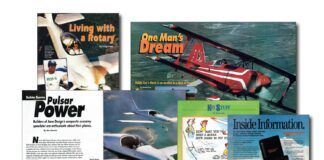
Marc, in the hangar right next door to Omar’s is Andy Plunkett’s Glastar. I just bought it and I’m flying her back around 10.28. I’m having Alan N help me with my transition training and a BFR. This will be the longest cross country I’ve taken. I’ve never flown over the mountains either. My destination is Madison, Indiana, KIMS.
Any suggestions about a route, flight planning, good places to stop … would be appreciated.
Kindest Regards,
Bob Brocious
N34ND